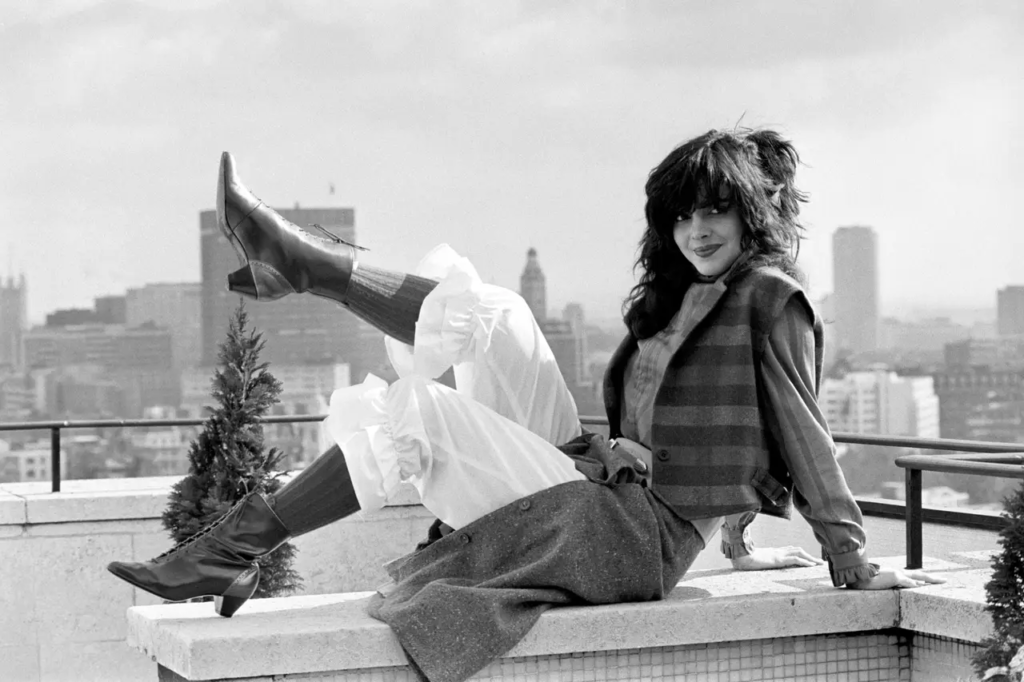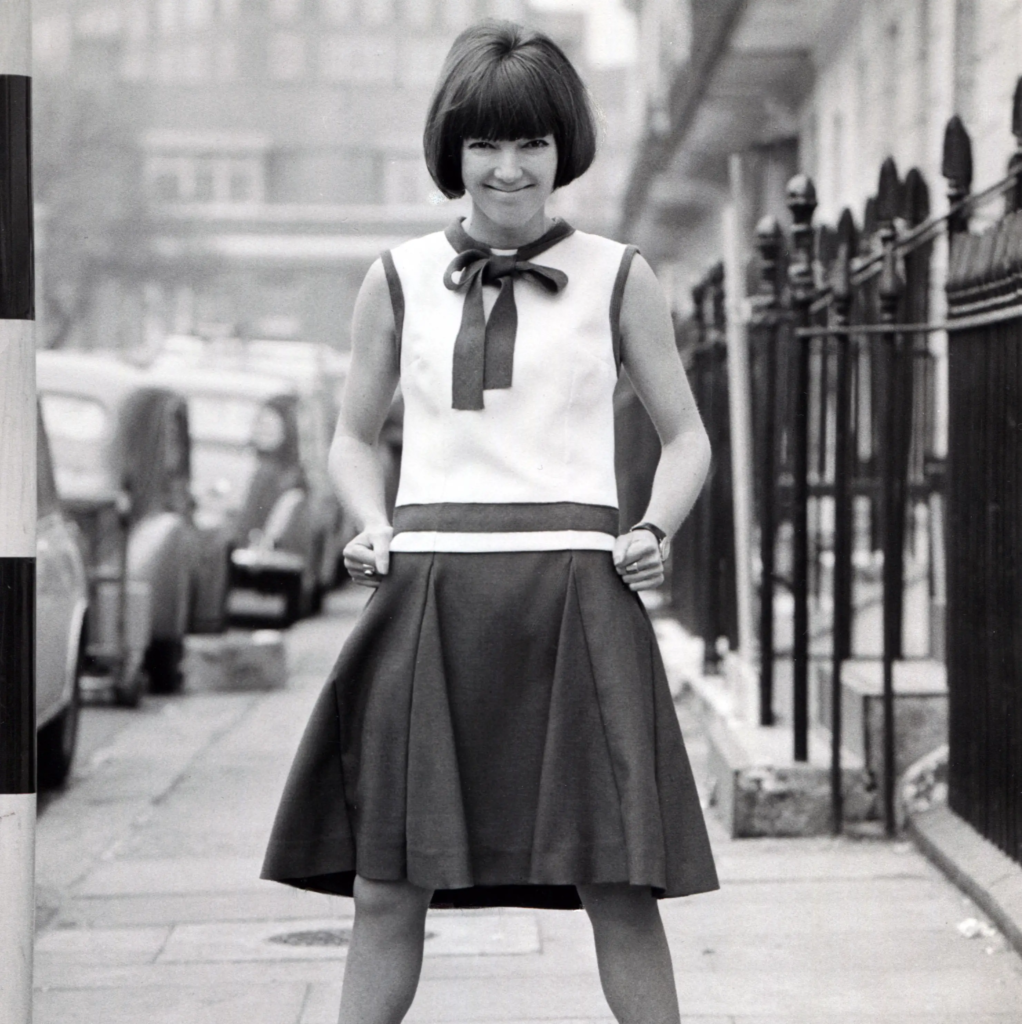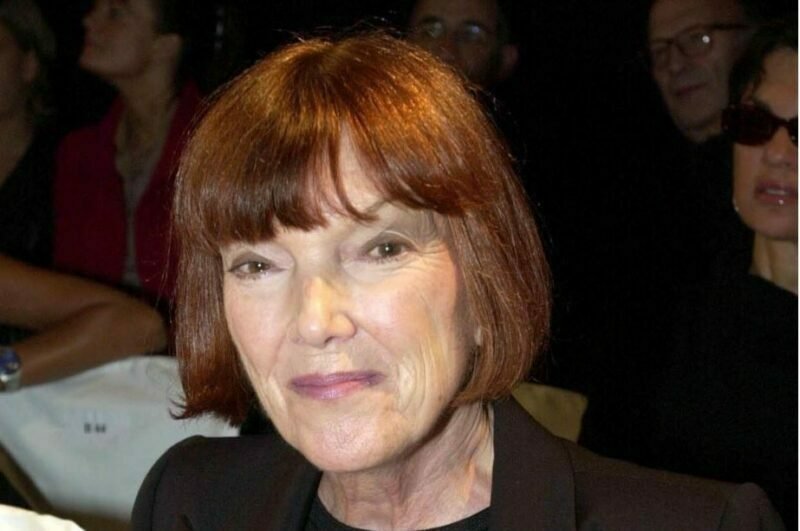Designer Dame Mary Quant, who passed away at the age of 93, has been honored in part by model Twiggy Lawson.
According to her family’s announcement on Thursday, the fashion icon passed away “peacefully at home in Surrey”.
The miniskirts that helped characterize the Swinging ’60s were ascribed to Dame Mary with making them popular.
Twiggy, a fashion sensation of the time, credited Dame Mary with having “such an influence on young girls in the late 50s and early 60s.”
She was a smart female businesswoman who revolutionized the fashion industry, the author claimed in a social media post. She made the 1960s unrecognizable without her.
Former Vogue editor Alexandra Shulman spoke to Dame Mary as a “leader of fashion but also in female entrepreneurship” and that she was “a visionary who was much more than a great haircut.”
In memoriam Mary Quant: pioneer of high street fashion in the 1960s
Pictured are: Inventor of the miniskirt who helped shape 1960s style
Mary Quant, the pioneer of the miniskirt and PVC

“RIP Mary Quant, who freed the female leg,” tweeted Vanessa Friedman, the International New York Times’ fashion director. “You owe us,”
One of the most well-known fashion designers of the 20th century, according to her family, she was also an extraordinary innovator.
“In 1955, she opened her first store, Bazaar on the King’s Road, and her visionary and inventive abilities soon established a unique contribution to British fashion.” For years, Dame Mary has been praised for her innovative designs that successfully combined comfort and usefulness.
She found inspiration in the 1950s west London counterculture scene, which gave rise to the neighborhood where she made her home.

She created costumes that made ladies feel comfortable rather than just clothes for special occasions by drawing inspiration from the Mod style, which included Italian sportswear.
A generation of young women looking for an alternative to the typically somber clothes that were typical in post-war Britain found it to be highly appealing.Quant’s contribution to fashion cannot be overstated, according to the Victoria & Albert Museum. She served as a new role model for young ladies and embodied the joyous freedom of 1960s fashion.She had a concept that paved the way for modern fashion.
According to BBC, David Bailey, a photographer who captured much of the energy of London in the 1960s, Quant “was kind of wonderful, she was very positive.”
On Witness History, hear Dame Mary Quant.
How Quant’s space-age clothing altered what we wore in the 1960s
Dame Mary was one of the most important players in the 1960s fashion industry and is credited with democratizing fashion with her svelte, streamlined, and colorful creations.

Dame Mary was the daughter of two Welsh schoolteachers and was born in south-east London on February 11, 1930.
In the 1950s, she graduated from Goldsmiths College with a diploma in art instruction. It was then that she also met her future husband, Alexander Plunket Greene, who later assisted in building her brand.Dame Mary, a rising fashion designer, began her career as an apprentice to a milliner before starting her own business and opening Bazaar, a shop on the King’s Road in Chelsea, in 1955.
The store would grow to be the lifeblood of Swinging London. The clothing and accessory store Bazaar also had a café in the basement that served as a gathering place for young people and creatives.
Soon, Brigitte Bardot, Audrey Hepburn, the Beatles, and the Rolling Stones were among the famous people who frequented the entire Chelsea neighborhood.
Her inventive and far-sighted abilities made an immediate and distinctive contribution to British fashion.
The miniskirt, hot pants, and her role in the 1960s mod fashion movement are among Dame Mary’s most notable contributions to fashion.
Dame Mary, who named the skirt after the brand of car she preferred, recalled its “feeling of freedom and liberation” in 2014.
The mini was created by King’s Road girls, she claimed. I was manufacturing dance and jog-able clothing, and we made each item to the desired length for the customer.Customers were saying, “Shorter, shorter,” as I wore them very short.
Dame Mary stated to the Guardian in 1967 that “good taste is death, vulgarity is life,” and she designed short dresses and skirts with straightforward designs and vibrant colors that she referred to as “arrogant, aggressive, and sexy.”
A protracted and contentious debate with the late French fashion designer Andre Courreges, among others, centered on whether or not Dame Mary actually designed the miniskirt.
However, there is no disputing her contribution to the global trend of thigh-skimming, extremely short hemlines.
Dame Mary experimented with new textiles, such as PVC and stretch fabrics, to create a contemporary and whimsical style. She also toyed with geometric patterns, polka dots, and clashing colors.
She displayed her models in opulent and provocative window displays overlooking the King’s Road, which turned into a catwalk for miniskirts and attracted American photographers eager to capture Swinging London.
Dame Mary described what happened in her 1966 book Quant by Quant. “City gents in bowler hats beat on our shop window with their umbrellas shouting ‘immoral!’ and ‘disgusting!’ at the sight of our miniskirts over the tights, but customers poured in to buy,” she recounted.
Along with popularizing the bob haircut made popular by her friend and successful businessman Vidal Sassoon, Dame Mary also invented the narrow rib sweater, hot trousers, and waterproof mascara.For her contributions to the fashion business, Dame Mary received an OBE in 1966 and was created a dame in 2015. She was also a Fellow of the Chartered Society of Designers and the 2015 recipient of the society’s highest honor, the Minerva Medal. The most recent New Year’s Honors gave her the title of honorary companion.

Her art was the subject of a retrospective exhibition that debuted at the V&A in 2019 and has since traveled to Australia, New Zealand, Taiwan, and Japan.
Dame Mary reflected on her first 20 years of work and remarked, “It was incredibly thrilling and despite the hectic, hard work we had enormous fun.We were simply too preoccupied taking advantage of all the opportunities and loving the outcomes before moving on to the next challenge for us to have known that what we were doing was groundbreaking.
Sadie Frost, an actress and fashion designer, said she was “honored” to host a documentary in 2021 about Dame Mary’s “astonishing life.”
The more I looked into her life and conducted research, the more I realized how much of an impact she had on history, popular culture, fashion, and women’s rights, according to Frost in a statement to the BBC. “I had a strong sense that I knew and loved her. Mary, please go in peace.





